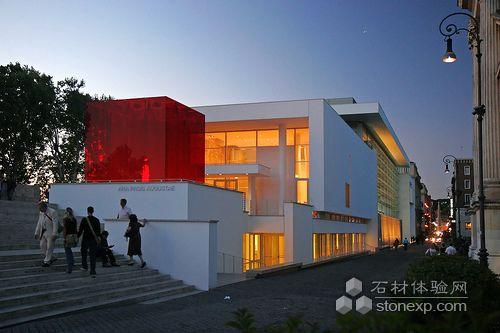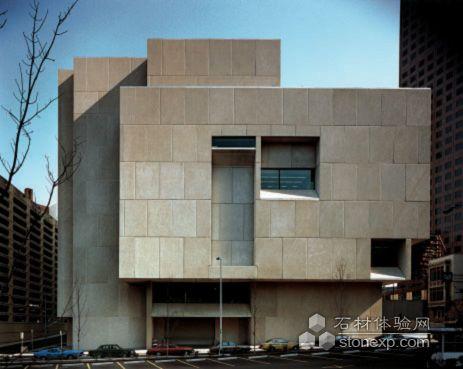Design Of The Museo dell’Ara Pacis is honored in Italy
|
“Planned as part of an effort to protect Rome’s cultural legacy, the new structure replaces the monument’s previous enclosure, which was in a state of advanced decay,” reads a statement from Richard Meier & Partners. “The structure consists of a long single-story glazed loggia elevated above a shallow podium providing a transparent barrier between the embankment of the Tiber and the existing circular perimeter of the mausoleum of Augustus, built circa 28 B.C. “The altar was relocated from the Campo Marzio in 1938 during the Mussolini era, and a system of regulating lines was applied to the project to relate the altar’s present position to its original site,” the statement continues. “Bisecting the distance between the present center of the mausoleum and the original site yielded a four-square urban grid that was used as a proportional frame to reorganize the piazza and its surroundings. An artificial obelisk is used as a historical reference on the north-south axis through the altar. The clarity of the volumes and the building’s proportions relate in scale to Rome’s ancient structures. A predominating feature of the new building is a glass curtain wall measuring 150 feet long and 40 feet high. From the very beginning, the design of the Museo dell’Ara Pacis was to include premium building products, including natural stone. “The design of the new museum is of the highest quality, as are the first-class materials that were used to build it,” according to a statement released by the museum. “The materials were chosen with a view to integrating the building with its surroundings: the travertine gives continuity in the color scheme, the plaster and glass, which create a two-way transition between the interior and exterior and give a contemporary effect of volume and transparency, simultaneously full and empty.” The travertine was quarried and processed by Mariotti Carlo & Figli of Tivoli, Italy, which also supplied the material used for the Getty Center. In fact, Meier was personally involved in devising the “guillotines” that are used to split the material and give the stone its unique appearance. “It has been worked in a ‘cracked’ fashion, which — in conjunction with the characteristics of the stone itself — make it a unique material,” according to the museum’s statement. “The technique that produced it was honed by Meier himself.” |





